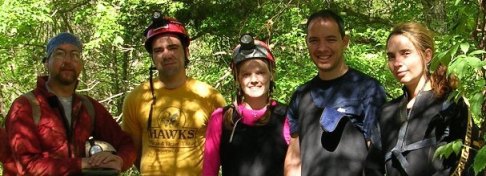
Expedition Crew: Jim Kaufmann, Steve Wallace, Eileen Ernenwein, Blaine Schubert, and Wendi Shaver
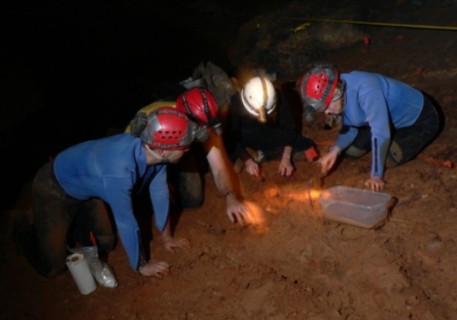
Giant ground sloth remains were discovered in an Ozark cave in the summer of 2003 (by Kaufmann, Schubert, and Ernenwein). These remains were on an existing trail (foot path) and had been damaged by previous explorers. A three day salvage operation was planned and took place in May of 2005.
First a grid was set up and the "sloth ledge" was systematically searched.
To learn more about giant ground sloths click here.
(all cave photos by Jim Kaufmann)
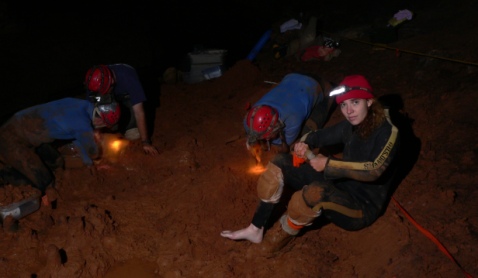
The ledge was covered by a thin layer of clay that contained highly fragmented bones. Most of the sloth was gone - probably the result of exposure, erosion, and flood events.
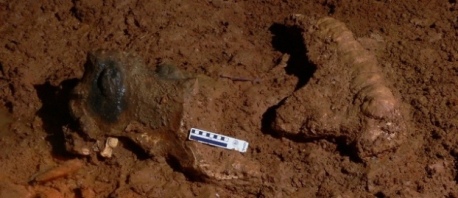
Picture of a partial femur and a series of tail vertebrae. One of the trails ran between the leg bone and the vertebrae, destroying the upper part (proximal end) of the femur.
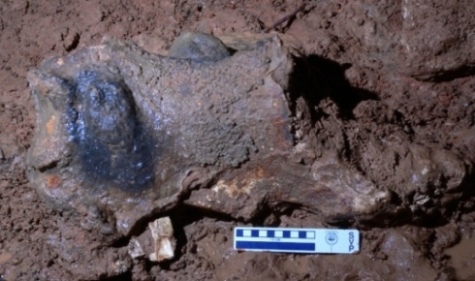
The partial femur was propped up on a stalagmite and cemented to it by subsequent layers of flowstone. A small stalagmite also formed on top of the femur (the dark oval area on the left half of the picture).
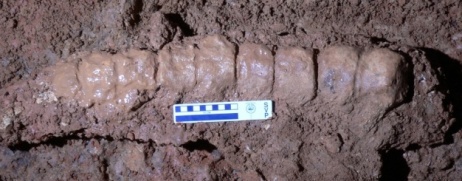
A close-up of the sloth tail (caudal vertebrae). The surface of these were exposed when the discovery was made and trails existed on both sides, running parallel to the long axis of the vertebral column.
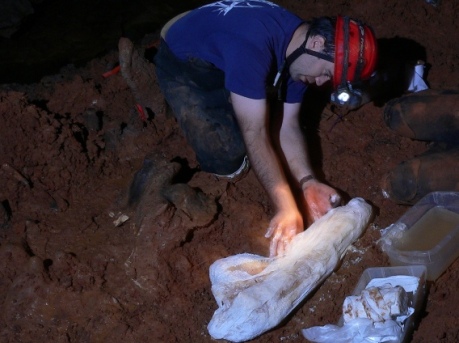
The vertebral column and femur were taken out of the cave in plaster jackets. Access to the locality required wading through deep water, thus the plaster jackets were placed in plastic containers and rafted out.
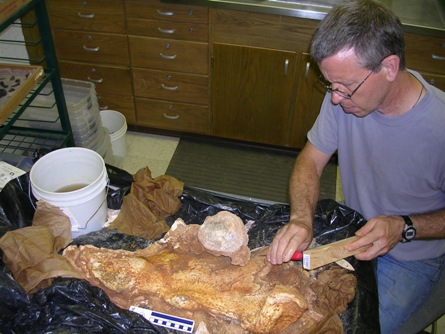
Preparator Jeff Supplee removes flowstone from the underside of the sloth femur in the East Tennessee State University prep lab. Note the stalagmite is still attached to the femur.

Two views of the stalagmite after removal from the femur. The stalagmite was sent to the Minnesota Isotope Laboratory (University of Minnesota) for dating.

230Th ages bracketed the deposition of the giant ground sloth femur between approximately 37,000 and 42,000 years ago. Based on the association of skeletal remains and articulated vertebrae, the sloth either died in this location or was transported to it shortly after death. Thus, the ages reported here also represent the approximate time that this animal lived and died.
Work in this cave is ongoing..... stay tuned.
This was a collaborative project between the Center of Excellence in Paleontology at East Tennessee State University, the Illinois State Museum, the Missouri Department of Conservation, Ozark National Scenic Riverways, and the University of Minnesota Isotope Laboratory.